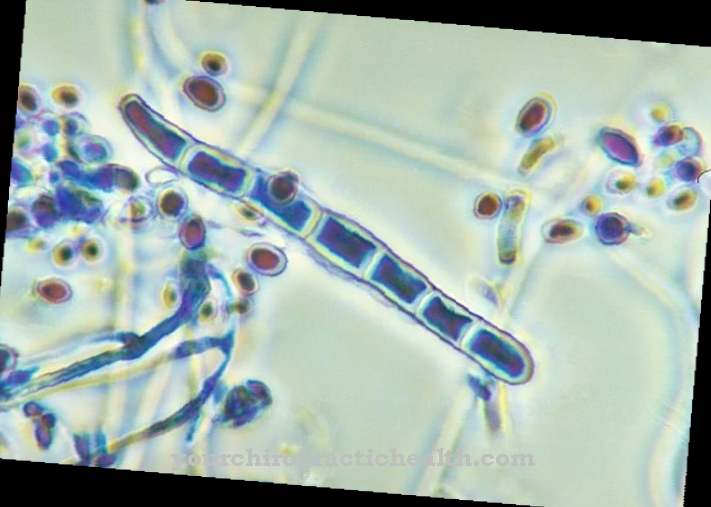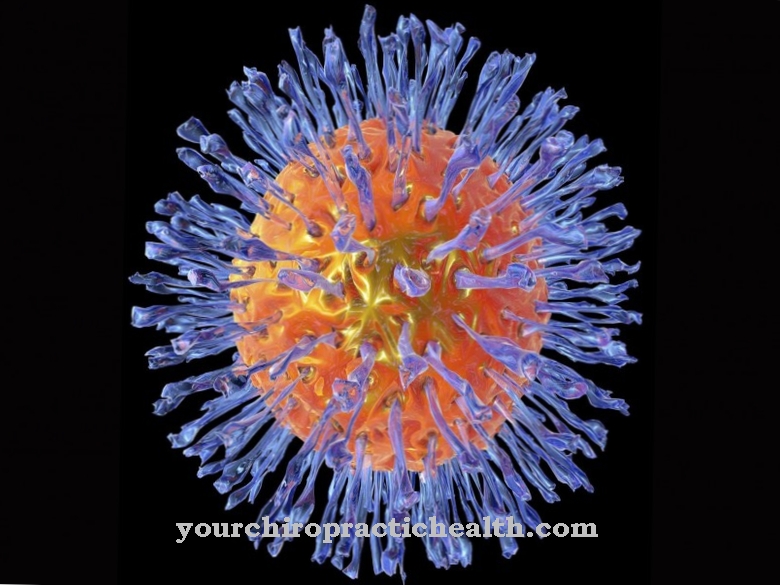A Pilus is an adhesin that enables bacteria to attach to cells and thus contributes to the colonization of the host. Gram-negative bacteria in particular are typically equipped with one or more pili. The presence of pili can significantly increase the pathogenicity of a pathogen and is considered a virulence factor.
What is a pilus?
The pilus or also Fimbriae is a component of prokaryotes. It is a thread-like protein that lies outside cells as a cell extension and belongs to the adhesins. Adhesins are surface components of bacteria that enable the microorganism to attach to the biological structures of its host. This means that abhesins correspond to so-called virulence factors, since they are a basic requirement for colonization.
In the narrower sense, these are bacterially produced factors that enable the bacterium to attach to structures or cells of the host. In the case of adhesion by adhesins, for example, the bacterium does not simply wash away.
The expression of the adhesins in some types of bacteria varies depending on the environmental conditions. There are different types of pili in the sense of an adhesin. The cell appendages differ in terms of protein, length and diameter. Their function can also be subject to slight variations from bacterium to bacterium. The length can vary between 0.1 and 20 micrometers. The diameter of the pili is between two and around 20 micrometers.
In addition to adhesion to interfaces between solid and liquid or gas and liquid, pili also enable bacteria to adhere to other bacteria and fixation to animal epithelial cells. In addition, the processes are sometimes involved in the DNA exchange of bacteria. Unlike bacterial flagella, pili are short and rigid. They protrude intra- and extracellularly.
Meaning & function
Pili are especially typical for bacteria with gram-negative staining behavior. These types of bacteria have one to four of these cell processes, depending on the individual. Through the pili, water-colonizing bacteria can attach themselves to solids and thus remain in the same place in liquid media. The medium washes new nutrients past them and washes away the breakdown products of their metabolism.
By attaching themselves between air and liquid via their pilus or pili, bacteria can also extract nutrients from the liquid medium and at the same time draw oxygen from the air. The attachment of a dense layer of bacteria to the surface of liquid media is also known as scum.
Some types of pili are used for horizontal gene transfer. These pili are called F-pili or sexual pili. They are relatively thick and hollow appendages that only donor bacteria or donors have. The recipient-individual is called the acceptor or recipient and the pilus is broken down again after contact with him. This automatically reduces the cell distance between acceptor and donor.
Outside the pilus, a plasma bridge can be built up at an extremely short distance, which serves to transmit genetic information. Resistance (R) factors and fertility (F) factors are brought to exchange via the plasma bridge. As part of this, the double strand of the DNA is wound up into single strands, after which parts of the strand migrate from the donor to the recipient. This is followed by the dissolution of the plasma bridge. The bacteria then complete the single strand to form a double strand.
Still other bacteria have so-called type IV pili, which allow them to move on a solid surface. Your pili are made up of PilA protein copies and are not hollow. Usually they are located at both poles of a bacterium equipped with them.
Other types of pilus are the Hrp-Pilus, which occurs mainly in plant pathogens, the Type-I Pilus, the Type-IV Pilus and the Pap-Pilus. The common feature of the pili lies in their building protein, which corresponds to the so-called pilin. In addition, most pili are tubular.
Illnesses & ailments
In the case of many bacteria, the pathogenicity is increased by providing them with pili. This means that a bacterium with a pilus is in many cases more pathogenic than a bacterium without a pilus. In this case, pili not only take on the role of an adhesin, but also the role of a virulence factor. In this context, virulence factors are all properties of a microorganism that make its pathogenic effect and thus its virulence determinable.
In addition to pili for attachment to cells, instruments for penetrating cells and mechanisms for cell destruction play a role for the virulence factors of a particular microorganism. Virulence factors are often structural elements like the pili, but can also correspond to metabolic products of the microorganism.
In many types of bacteria, the pili are the decisive structural element for colonizing a host organism. If a bacterium cannot attach itself to its host, it is usually less able to penetrate the host organism. As long as the bacterium does not penetrate, it cannot multiply in the host and thus cannot cause a pathological condition in the host's body.
In most cases, pili react in specific or non-specific ways with individual receptors within the target cell membrane to anchor the bacterium in it.
The specialized pili for DNA exchange between bacteria also promote the aggressiveness of a pathogenic agent in the broadest sense. The faster a pathogen can spread in the host's body, the more aggressive and faster the infection that results.

























.jpg)


